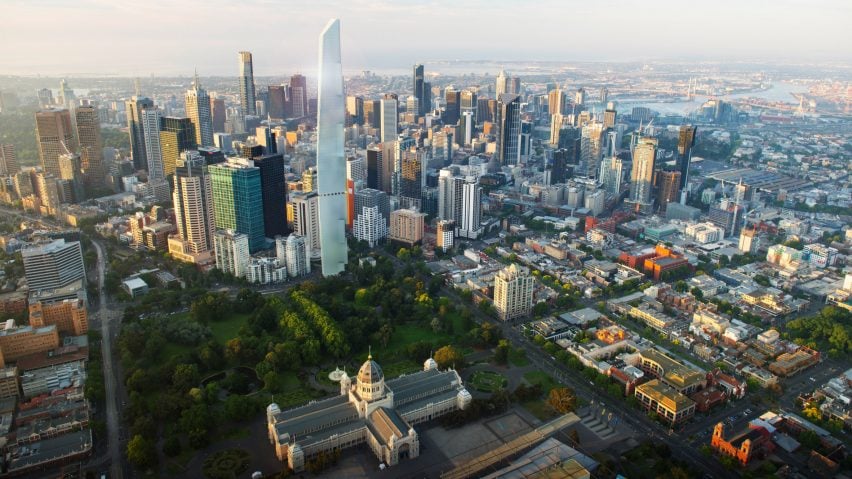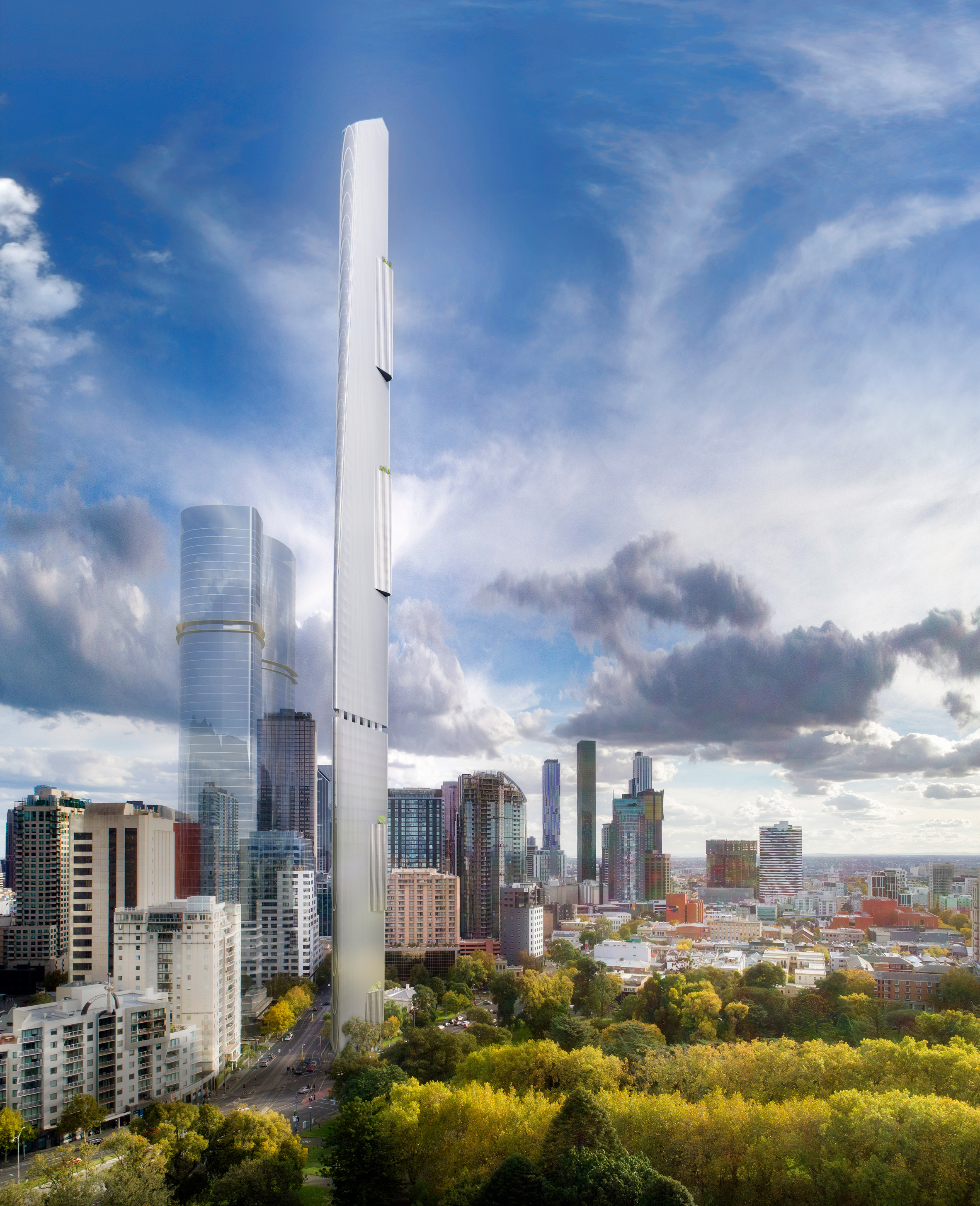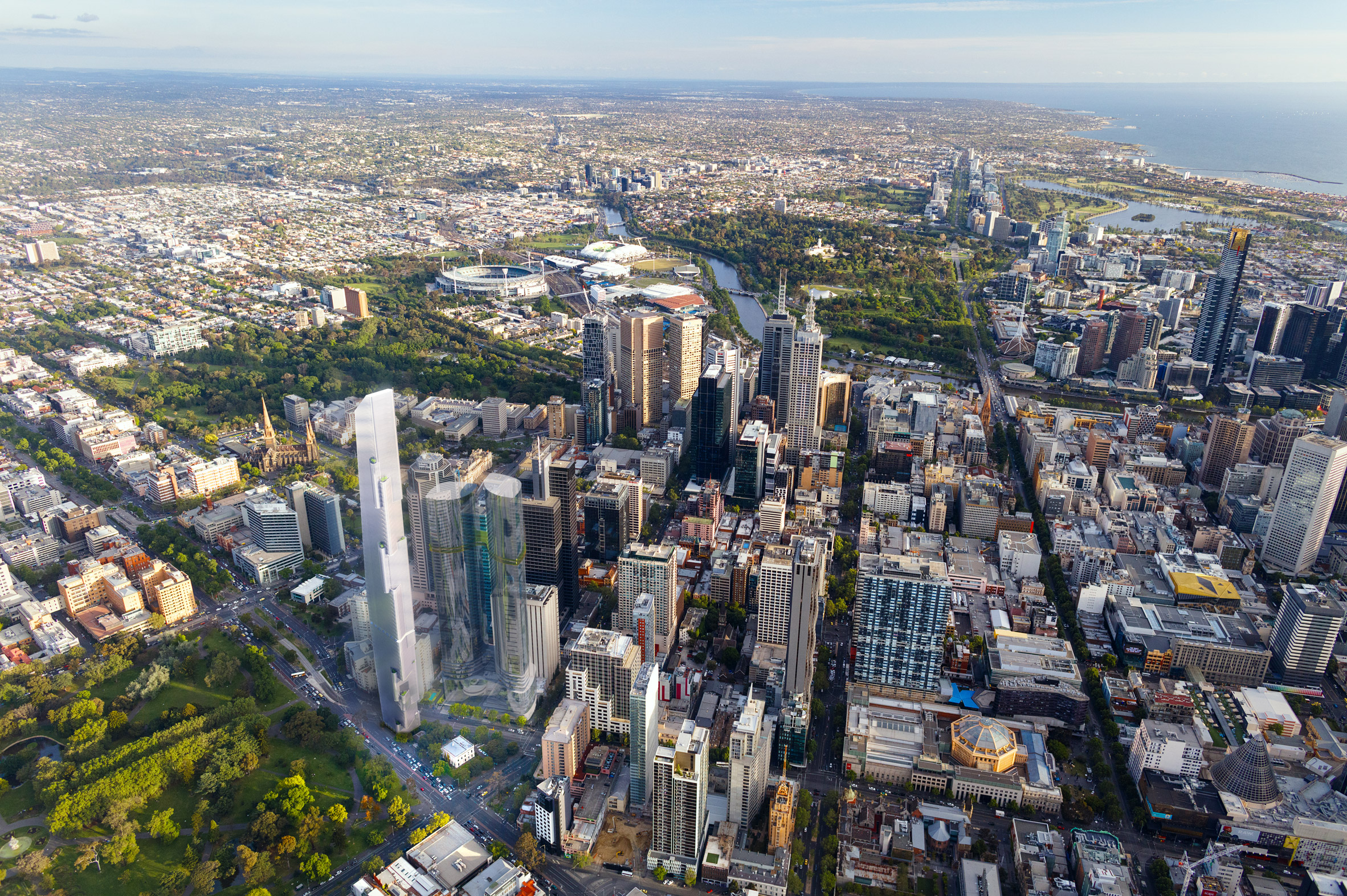Proposed for an angled plot of half the size of a tennis court, the Magic Tower would be the tallest building in the city, surpassing the Eureka tower of 297.3 meters.
The design has been sent for planning and, if approved, could be built after 2022.
Because of its shape, its slenderness ratio would be "out of the box," DeciBel Architecture founder Dylan Brady told Dezeen.
"The thinnest is the current one in New York City, around 22/23: 1. If we were a rectangle we would sit at 18: 1, but since we are a triangle with an effective width of 12.4 meters, our slenderness ratio It pushes Around 26.6: 1, "he said.
The city of New York currently has a monopoly of tall and thin towers. Rafael Viñoly Architects recently completed a 425-meter thin tower in Manhattan, which has open floors for the wind to pass through, while Meganom plans to build a 305-meter residential skyscraper with an aluminum and glass facade.
To adapt to the narrow site and remain as high as possible, DeciBel Architecture added multiple rotations to the design of the tower.
"Tall buildings need their center of rotation to be as close as possible to the center of mass, our triangular shape has led to a very interesting tuning and innovation," said Brady.
"As with any tall building, the wind rules, and we have a series of open floors through the tower to allow the plant and the drilling and wind confusion to occur." The west end of the tower is stepped, separate laminar flows, the eastern end is sharp, which reduces the load along the edge, "he added.
"We have allowed a new and innovative type of mass absorber near the top of the building, developed here in Victoria, to drive the upper reaches by gravity and reduce the roll."
Both the core and the perimeter would be made of concrete, using cutting-edge construction technology.
"We have some of the most innovative technologies in the world in Victoria to do this, and our construction partner and developer invented the Lubeca system responsible for skipping cores in most of the world's tall buildings," said Brady.
Australian developer Grocon plans to divert most of the profits from the sale of apartments in the 60-story tower to an endowment fund for the scientific institution Royal Society of Victoria (RSV), with profits for investors with a minimum limit.
Before commissioning the designs of a building on the site, the RSV used the plot to house a weather observation facility.
In addition to testing the limits in terms of height and slenderness with the magic tower, Decibel architects hope to push the limits in terms of sustainable design, in part to benefit the RSV.
The north and west sides of the tower would be equipped with solar panels that could power the entire building, along with an excessive supply that could be used by the RSV facilities. Rainwater would be captured from the facade and stored for use by the building.
Melbourne is also about to get a tower from Zaha Hadid Architects, a 64-meter-high apartment block with curved balconies and a couple of rooftop pools.
There are still doubts about whether the city will receive a Foster + Partners project in the form of an Apple flagship store for its Federation Square, after protests by residents saw the plans go to the parliament of the state of Victoria.


